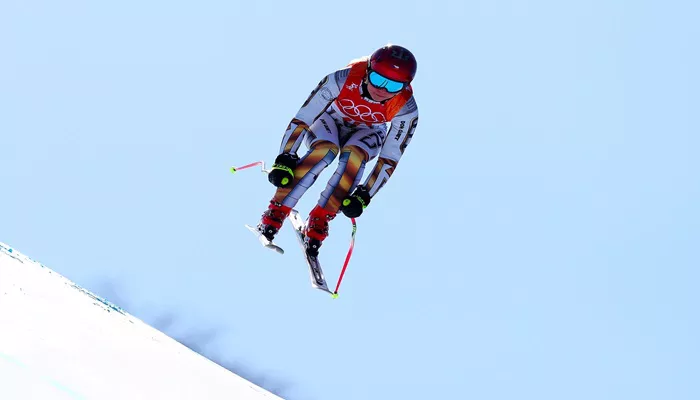Super G, short for Super Giant Slalom, is one of the most thrilling alpine skiing disciplines. Combining speed and technical skill, it tests a skier’s ability to maneuver through widely spaced gates at high velocities. As a middle ground between downhill and giant slalom, Super G challenges both reaction time and precision, making it a highlight of competitive skiing events such as the Winter Olympics and World Cup circuits. This article provides a detailed look into the world of Super G—its rules, structure, differences from other ski disciplines, and its significance in the alpine skiing world.
What Defines Super G Skiing
Super G is classified under alpine ski racing. It involves skiing down a steep course marked with gates, but unlike slalom or giant slalom, the gates are spaced further apart. This results in faster speeds and less turning, pushing athletes to balance control with daring speed. The course layout typically allows racers to reach speeds between 80–100 km/h (50–62 mph).
Origin and Development
The Super G was introduced as a competitive event in the 1980s to bridge the gap between technical and speed events. First raced in the World Cup in 1982 and added to the Olympics in 1988, it quickly gained popularity for its dynamic blend of speed and skill. The International Ski Federation (FIS) governs its rules and has refined course design to ensure fairness and safety across competitions.
Rules and Format
The Super G format consists of one run down a single course. Racers do not get a training run, unlike in downhill races. Instead, they rely on a single course inspection before the competition. This rule tests athletes’ memory, judgment, and adaptability. Key requirements include:
Course must have a vertical drop of 350–650 meters for men and 350–600 meters for women.
Minimum of 35 gates for men and 30 for women.
Gates are set at a minimum distance apart (at least 25 meters), demanding both speed and technical turning.
Course Design And Features
Super G courses feature a mix of open gliding sections and tight technical turns. Designers often incorporate terrain changes, such as jumps, rolls, and compressions, adding unpredictability. Unlike downhill races, where racers have multiple training runs to memorize each feature, Super G demands instant adaptation. This dynamic layout tests a racer’s ability to maintain form and balance while executing precise turns at speed.
Super G vs. Other Alpine Ski Events
Understanding Super G requires comparison with other alpine skiing events:
Super G vs. Downhill
Downhill focuses purely on speed with minimal turns and longer courses. Racers can reach speeds exceeding 130 km/h. Super G is slightly slower but requires more turning and technical control.
Super G vs. Giant Slalom
Giant slalom has more gates and tighter spacing, demanding more frequent and precise turns. Super G requires fewer turns but at higher speeds, placing different demands on athletes’ reflexes and risk management.
Super G vs. Slalom
Slalom features the shortest and most technical course with the closest gates. It’s about agility and quick reflexes. Super G sacrifices some of this agility for raw speed and broader turns.
Super G Equipment
Equipment is specially designed to meet the needs of Super G’s high-speed yet technical nature:
Skis: Longer than slalom or GS skis, typically 205–210 cm for men and 200–205 cm for women. They have less sidecut to increase stability at speed.
Bindings: Set to release only under extreme forces to protect against injury during crashes.
Boots: Stiff, with a forward lean to allow aggressive positioning.
Suits: Aerodynamic and skin-tight to reduce drag.
Helmets: Mandatory, often equipped with chin guards and visors.
Training for Super G
Elite Super G skiers train to refine both speed and technique. Key areas include:
Speed Management: Training runs simulate race speed, teaching skiers to control their center of gravity.
Course Visualization: Mental rehearsal plays a key role since athletes only inspect the course once.
Edge Control: Learning to carve through turns with minimal sliding to preserve speed.
Terrain Reading: Advanced techniques to anticipate jumps and compressions.
Notable Super G Competitors
Some athletes have left a lasting impact on the discipline:
Hermann Maier: Known as “The Herminator”, won multiple World Cup Super G titles.
Lindsey Vonn: Dominated women’s Super G for years with her strength and technical mastery.
Kjetil Jansrud: Norwegian specialist with Olympic and World Championship medals in Super G.
Super G in the Olympics and World Cup
Super G is a staple in the Winter Olympics and FIS World Cup. Its inclusion adds diversity to alpine skiing, showcasing athletes who excel in both speed and skill. It’s considered a true test of all-around skiing ability.
Risks and Safety Measures
Super G is inherently dangerous due to high speeds and technical complexity. Injuries are common in alpine racing. Safety measures include:
Protective netting and barriers along the course.
Course design to reduce blind jumps or unsafe terrain transitions.
Mandatory protective gear, including back protectors and helmets.
How to Get Started in Super G
For aspiring racers, progression usually follows this path:
Mastering slalom and giant slalom at junior levels.
Gradual introduction to speed events through local and regional competitions.
National competitions offer experience in full-size Super G courses.
Eventually qualifying for FIS events, where competition becomes international.
Where to Watch or Try Super G
Many major ski resorts and events offer opportunities to observe or participate:
Watch: Events like the FIS Alpine World Cup and Winter Olympics offer televised coverage.
Try: Resorts with FIS-level training slopes sometimes open training to experienced skiers under supervision.
Skiing Guide: Check out this comprehensive Skiing Guide for tips on alpine racing techniques, gear, and safety.
Conclusion
Super G remains one of alpine skiing’s most exciting and respected events. Balancing speed, power, and technical skill, it demands the very best from competitors. Whether you’re a fan, aspiring racer, or ski enthusiast, understanding Super G deepens your appreciation for the athleticism and precision that define the sport.

